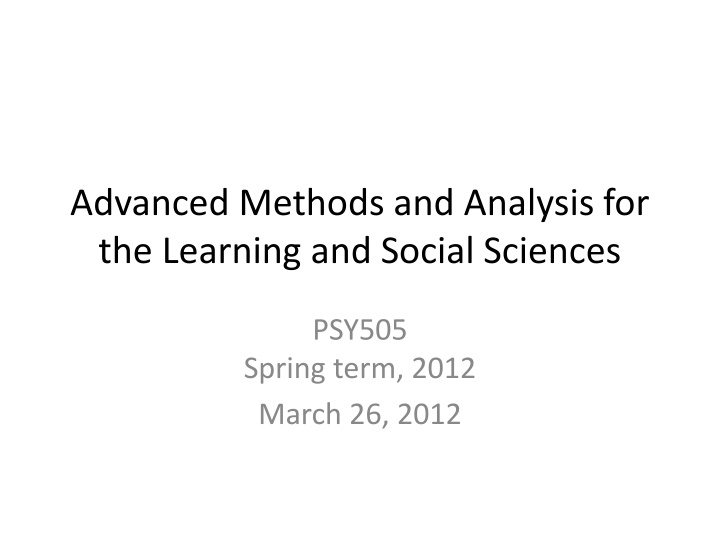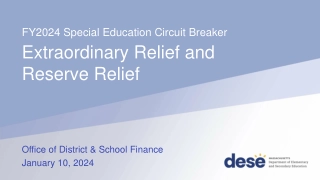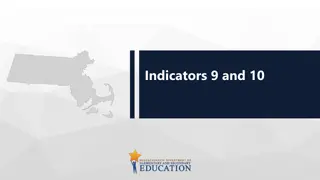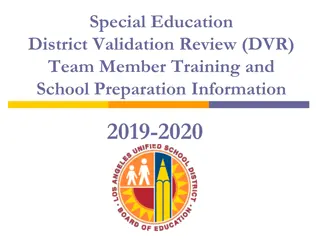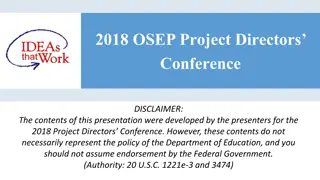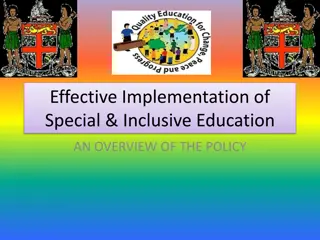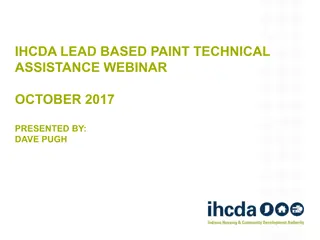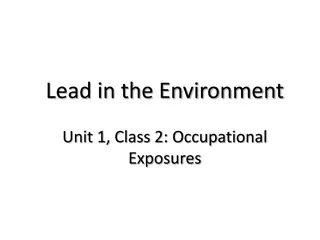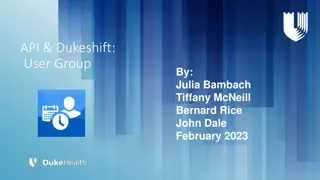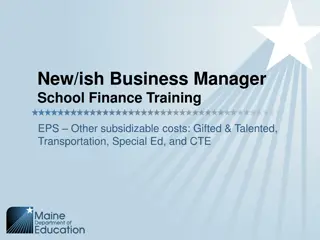Jennifer Gould - Special Education Department Lead
Jennifer Gould is dedicated to ensuring every student's unique learning needs are met in the Special Education Department. With a focus on supporting students throughout their high school journey, she aims to prepare them for a successful future by personalized educational approaches.
Download Presentation

Please find below an Image/Link to download the presentation.
The content on the website is provided AS IS for your information and personal use only. It may not be sold, licensed, or shared on other websites without obtaining consent from the author.If you encounter any issues during the download, it is possible that the publisher has removed the file from their server.
You are allowed to download the files provided on this website for personal or commercial use, subject to the condition that they are used lawfully. All files are the property of their respective owners.
The content on the website is provided AS IS for your information and personal use only. It may not be sold, licensed, or shared on other websites without obtaining consent from the author.
E N D
Presentation Transcript
Advanced Methods and Analysis for the Learning and Social Sciences PSY505 Spring term, 2012 March 26, 2012
Todays Class Sequential Pattern Mining
Related to Association Rule Mining MOTIF Extraction
Similarities MOTIF Extraction can be seen as a type of sequential pattern mining Though MOTIFs can also be non-sequential, like in the Shananbrook et al paper Some SPM algorithms find simpler patterns than MOTIF, other algorithms find more complex patterns than MOTIF
Similarities Some algorithms for Sequential Pattern Mining similar to Association Rule Mining
Association Rule Mining Try to automatically find if-then rules within the data set
Sequential Pattern Mining Try to automatically find temporal patterns within the data set
ARM Example If person X buys diapers, Person X buys beer Purchases occur at the same time
SPM Example If person X buys novel Foundation now, Person X buys novel Second Foundation in a later transaction Conclusion: recommend Second Foundation to people who have previously purchased Foundation
SPM Example Many customers rent Star Wars, then the Empire Strikes Back, then Return of the Jedi Doesn t matter if they rent other stuff in- between
SPM Example Many customers buy flowers, and then buy diapers AND diaper cream several months later
SPM Example Many learners become confused, then game the system, then become frustrated, then complete gaming the system, then become re- engaged
Different Constraints than ARM If-then elements do not need to occur in the same data point Instead If-then elements should have same user (or other organizing variable) If elements can be within a certain time window of each other Then element time should be within a certain window after if times
Sequential Pattern Mining Find all subsequences in data with high support Support calculated as number of sequences that contain subsequence, divided by total number of sequences
Sequential Pattern Mining What are some subsequences with high support? (What is their support?) Chuck: a, abc, ac, de, cef Darlene: af, ab, acd, dabc, ef Egoberto: aef, ab, aceh, d, ae Francine: a, bc, acf, d, abeg
GSP (Generalized Sequential Pattern) Classic Algorithm (Srikant & Agrawal, 1996)
Data pre-processing Data transformed from individual actions to sequences by user E.g. Bob: {GAMING and BORED, OFF-TASK and BORED, ON-TASK and BORED, GAMING and BORED, GAMING and FRUSTRATED, ON-TASK and BORED}
Data pre-processing In some cases, time also included E.g. Bob: {GAMING and BORED 5:05:20, OFF-TASK and BORED 5:05:40, ON-TASK and BORED 5:06:00, GAMING and BORED 5:06:20, GAMING and FRUSTRATED 5:06:40, ON-TASK and BORED 5:07:00}
Algorithm Take the whole set of sequences of length 1 May include ANDed combinations at same time Find which sequences of length 1 have support over pre-chosen threshold Compose potential sequences out of pairs of sequences of length 1 with acceptable support Find which sequences of length 2 have support over pre-chosen threshold Compose potential sequences out of triplets of sequences of length 1 and 2 with acceptable support Continue until no new sequences found
Lets execute GPS algorithm With min support = 50%
Lets execute GPS algorithm With min support = 50% Chuck: a, abc, ac, de, cef Darlene: af, ab, acd, dabc, ef Egoberto: aef, ab, aceh, d, ae Francine: a, bc, acf, d, abeg
Other algorithms Free-Span Prefix-Span Select sub-sets of data to search within Faster, but same basic idea as in GPS
Perera et al. (2009) What were the three ways that Perera et al. (2009) used sequential pattern mining? What did they learn, and how did they use the information?
Perera et al. (2009) 1. Overall uses of collaborative tools by groups 2. Sequences of collaborative tool use by different group members 3. Sequences of access of specific resources by different group members In all cases, they found common patterns and then looked at how support differed for successful and unsuccessful groups
Perera et al. (2009): Important Findings 1. Overall uses of collaborative tools by groups Successful groups used ticketing system more than the wiki; weaker groups used wiki more Patterns were particularly strong for group leaders
Perera et al. (2009): Important Findings 2. Sequences of collaborative tool use by different group members Successful groups characterized by leader opening ticket and other student working on ticket Successful groups characterized by students other than leader opening ticket, and other students working on ticket
Perera et al. (2009): Important Findings 3. Sequences of access of specific resources by different group members The best groups had interactions around the same resource by multiple students The poor groups did no work on tickets before closing them
Zhang et al. (2005) Romero et al. (2008) Analyze students paths through learning resources in order to find and suggest resources for students
Robinet et al. (2007) Mine sequences of student actions in a system where students are allowed to skip steps In order to infer intermediate/implicit steps during algebraic manipulation In other words, if some students have A->B->C Infer that A->C has B in the middle Aids with choosing remedial feedback
What else? What else could sequential pattern mining be used for in education?
Asgn. 8 Solutions Let s look at solutions from Sweet Mike W.
Asgn. 9 Questions? Comments?
Next Class Wednesday, March 28 3pm-5pm AK232 Learning Curves Readings Martin, B., Mitrovic, A., Koedinger, K.R., Mathan, S. (2011) Evaluating and improving adaptive educational systems with learning curves. User Modeling and User- Adapted Interaction, 21 (3), 249-283. Assignments Due: None
